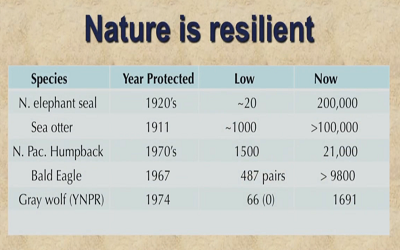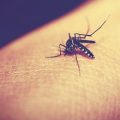在PTE中,无论是Summarise Spoken Text 还是 Re-tell Lecture的考题大都是从真实的讲座或者演讲中截取的,中间经常经常夹杂很多不同的环境音.很多同学都反映有时未必是听不懂,而是听不到. 鉴于此,墨尔本文波雅思PTE专门为大家总结了真实讲座的PTE练习音频,相比新闻音频来说,整体更加接近PTE考试的真题,内容方面,我们也会为大家提供考试中存在的近似题,最近我们会持续更新,敬请期待!
Nature is incredibly resilient, and I think more resilient than biologist’s thought. In the sense that given a chance in this case would be habitat, protection, time, populations can rebound dramatically. This is you know, 20 years that’s not a lot of time biologically. Some of these changes were evident within the first 5 to 10 years of the wolf reintroduction. Given time, given habitat, species can rebound in fact communities can rebound. We know this from other examples, for example protections that have been afforded by the Endangered Species Act. Let me show you a few examples of the rebound species we know about that have been protected say over the last century. Northern elephant seal in the late 20th century, late 19th century was hunted down to perhaps as few as 20 individuals, that populations now 200,000 because the protection of marine mammals. Sea otters have a very clear history because of the fur trade they are hunted all across the Pacific Rim from Aisa across the Alaskan coast down to California, reach the low perhaps 1000 animals protected beginning in 1911, there’s over 100,000 sea otters now. These are voracious carnivore area credibly at consuming shellfish and other things. Northern Pacific Humpback, well you can see these numbers may be 12-fold rebound about 40 years. Bald Eagle very famously of course was suffering because of DDT and other things down to 487 breeding pairs in the late 60s close to 10,000 breeding pairs today. And of course the Gray wolf in the Yellowstone general region which was 0 until reintroduction is now in much larger numbers, so just look at the scale of the rebound both in terms of magnitude and time. Species can rebound if they are given habitat and all that.





